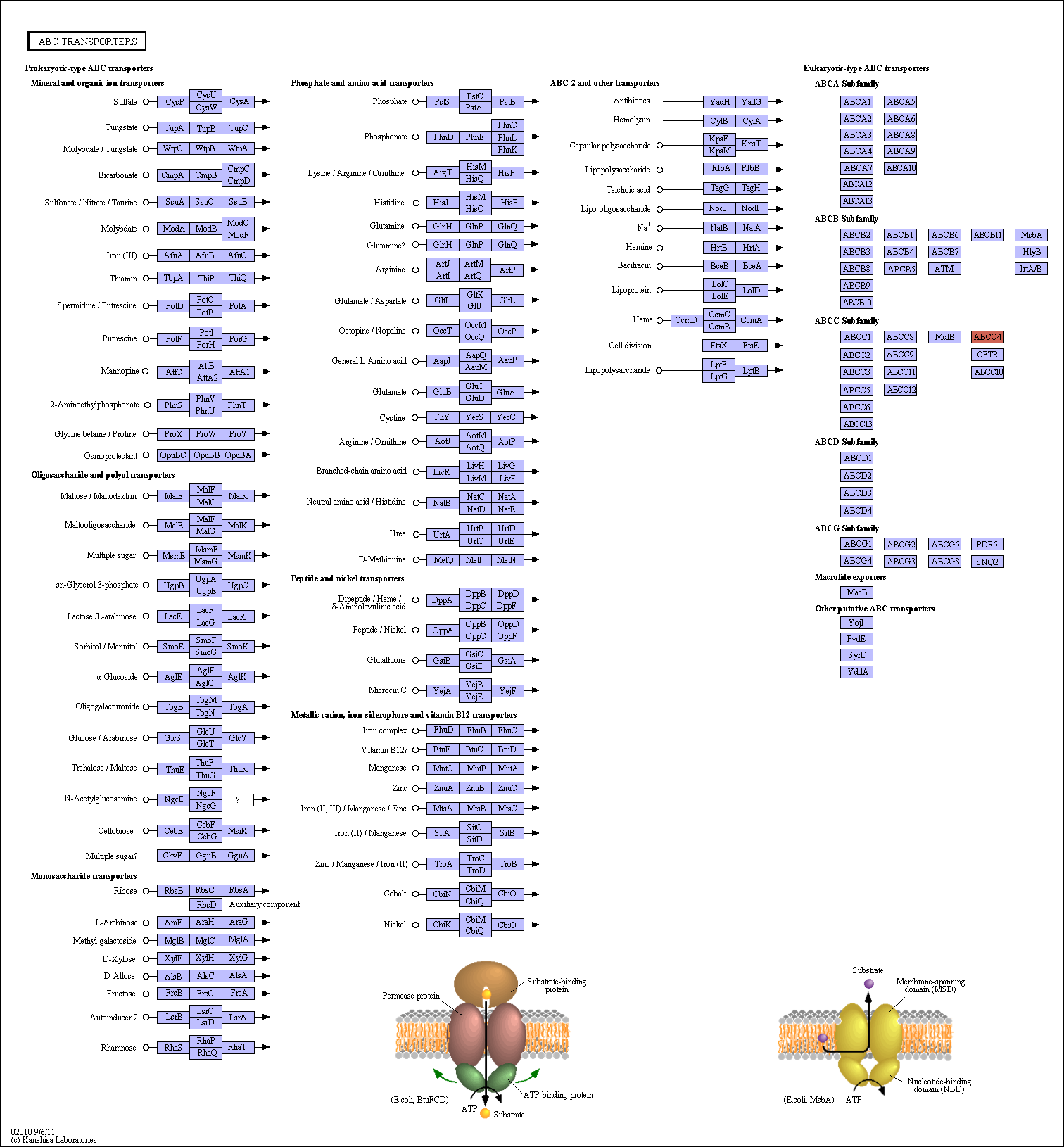|
The ATP-binding cassette (ABC) transporters form one of the largest known protein families, and are widespread in bacteria, archaea, and eukaryotes. They couple ATP hydrolysis to active transport of a wide variety of substrates such as ions, sugars, lipids, sterols, peptides, proteins, and drugs. The structure of a prokaryotic ABC transporter usually consists of three components; typically two integral membrane proteins each having six transmembrane segments, two peripheral proteins that bind and hydrolyze ATP, and a periplasmic (or lipoprotein) substrate-binding protein. Many of the genes for the three components form operons as in fact observed in many bacterial and archaeal genomes. On the other hand, in a typical eukaryotic ABC transporter, the membrane spanning protein and the ATP-binding protein are fused, forming a multi-domain protein with the membrane-spanning domain (MSD) and the nucleotide-binding domain (NBD). |
 ABC transporters - Reference pathway (KO)
ABC transporters - Reference pathway (KO)

 ABC transporters - Reference pathway (KO)
ABC transporters - Reference pathway (KO)

